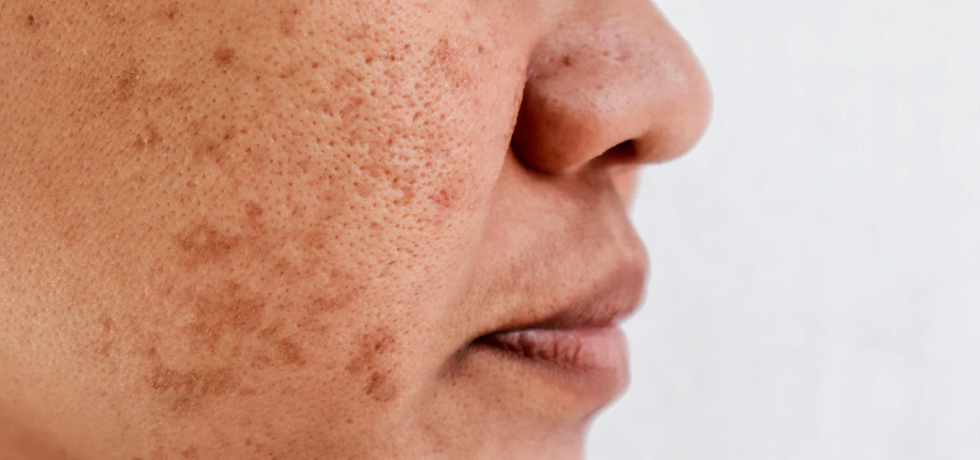
Understanding and Managing Melasma: A Comprehensive Guide
Introduction to Melasma
Melasma, often referred to as the “mask of pregnancy,” is a prevalent pigmentation condition that manifests as dark patches on the face and skin. It’s essential to understand this condition as it affects many individuals, particularly women. In this blog, we’ll delve into the causes, treatments, and management of melasma, aiming to provide you with a comprehensive guide to understanding and managing this skin condition.
What Is Melasma?
Melasma is characterized by brown or grey-brown patches primarily found on the face, notably appearing on the cheeks, forehead, nose, and chin. While it’s most common in women, individuals with darker skin types can also experience this condition. Interestingly, melasma can worsen in the summer months and improve through winter. Although melasma often resolves on its own, especially during pregnancy, it can persist for years, making effective melasma treatment essential for preserving one’s self-esteem.
Causes and Triggers of Melasma
Understanding the root causes of melasma is crucial for effective management. The production of pigment in the skin is often heightened by hormonal changes, especially during pregnancy or due to contraceptive medications. Sun exposure is another significant trigger, leading to increased activity of melanocytesthe cells responsible for pigmentation. If you’re considering melasma treatment options, its important to understand these triggers to help avoid potential outbreaks.
Identifying Melasma: Signs and Symptoms
Melasma presents as symmetrical, brownish patches on the skin, distinguishing it from other forms of hyperpigmentation. These patches may sometimes appear inflamed or red, but generally, melasma doesn’t cause physical discomfort. Recognizing these signs allows for early intervention. If you notice any unusual changes or patterns in your skin, consulting a dermatologist is advisable for early diagnosis and treatment.
Effective Treatment Options for Melasma
Managing melasma often requires a multi-faceted approach. Topical treatments are commonly used to reduce pigmentation, often containing ingredients like hydroquinone and azelaic acid. Chemical peels and laser treatments are also popular options that can significantly improve the appearance of dark patches. However, it’s crucial to have a personalized treatment plan developed in consultation with a dermatologist at a reputable clinic like The Skin Artistry to ensure the best possible outcome for your skin type.
Post-Treatment Care and Maintenance
After undergoing treatment for melasma, diligent skincare is essential for maintaining results. Using sunblock with broad-spectrum protection is vital, as UV exposure can exacerbate pigmentation. Incorporating Vitamin C serums into your skincare routine can aid in further reducing melasma and enhancing skin brightness. Additionally, a nourishing moisturizer can support your skin barrier, promoting healing and improving skin texture.
Dietary Considerations and Lifestyle Changes
What you consume can also impact melasma. A diet rich in antioxidants, particularly Vitamin C found in fruits and leafy greens, can be beneficial in reducing skin pigmentation. Omega-3 fatty acids, too, play a role in managing inflammation associated with melasma. Staying well-hydrated is equally essential to maintain skin health, making dietary choices a vital part of your management plan.
Conclusion: Your Path to Clearer Skin
Understanding and managing melasma is integral to achieving and maintaining flawless skin. With the right approachcombining expert treatment options available at The Skin Artistry, consistent skincare, and lifestyle changesyou can effectively combat the effects of this skin condition. Remember, patience and ongoing care are key as you work towards reducing the appearance of melasma and boosting your confidence.
FAQs About Melasma
1. Can melasma be itchy or painful?
Melasma itself is generally harmless and shouldnt cause any pain or itching. However, neglecting sun protection can worsen the condition.
Melasma itself is generally harmless and shouldnt cause any pain or itching. However, neglecting sun protection can worsen the condition.
2. How can I prevent melasma?
While some factors are nonmodifiable like genetics and hormonal changes, minimizing sun exposure and using sunscreen can reduce incidence.
3. When should I see a dermatologist?
Consult a dermatologist if you notice persistent patches on your skin or if you have concerns about changes in your pigmentation.
For professional assistance and expert advice from leading dermatologists like Dr. Hital Patel, experience the benefits of understanding and managing melasma with Hair & Skin Specialist Dr. Hital Patel at The Skin Artistry. Our clinics in PDPU Gandhinagar, Vastrapur Ahmedabad and Hyderabad (Visiting Consultant) offer top-quality care and personalized treatments. Visit us today to learn more about our services and take advantage of our special offers! For more insights, updates, or to collaborate, stay connected with The Skin Artistry.

